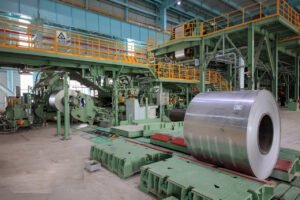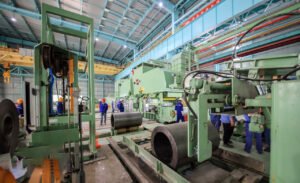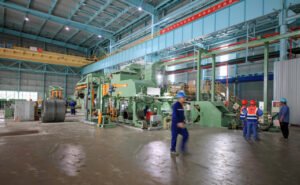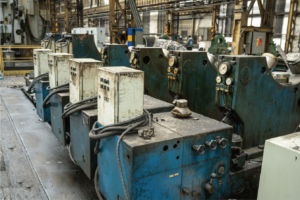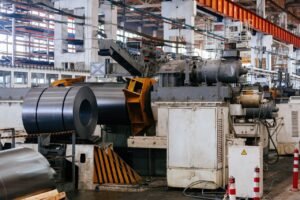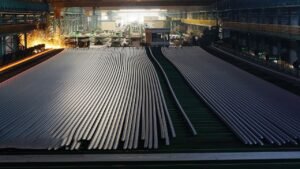Which is More Durable, Stainless Steel or Plastic?
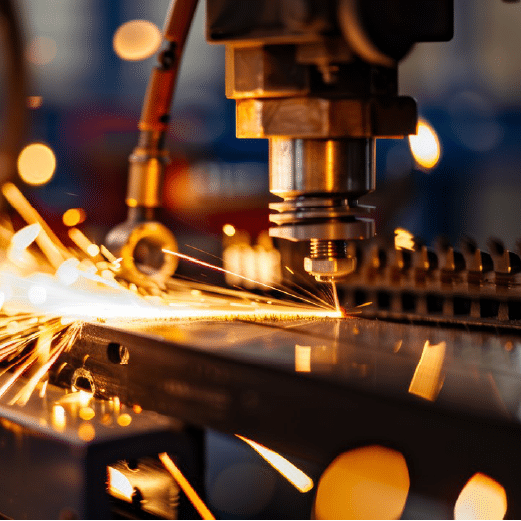
Throughout my career in materials engineering and product development, I've frequently addressed questions about the durability of stainless steel versus plastic. This comparison is crucial for various applications, from consumer products to industrial equipment.
Stainless steel1 generally demonstrates superior durability compared to plastic, offering better strength, temperature resistance, and longevity. However, plastics can offer advantages in specific applications where chemical resistance, weight, or cost are primary concerns.
Having worked extensively with both materials in various applications, I've learned that durability encompasses multiple factors beyond just strength. Through my years of experience at MFY Steel2, I've helped numerous clients understand when each material's durability characteristics best suit their needs.
The durability comparison between stainless steel and plastic has significant implications for product design and application. Let's explore the specific differences in durability characteristics and how they affect material selection.
What Are the Key Differences in Durability Between Stainless Steel and Plastic?
In my extensive experience testing and comparing these materials, I've observed several fundamental durability-related differences.
Stainless steel and plastic differ significantly in their mechanical properties, environmental resistance, and long-term performance. These differences directly impact their durability in various applications.

Physical Properties Comparison
Our materials laboratory testing revealed these key differences:
| Property | Stainless Steel | High-Performance Plastic | Impact on Durability |
|---|---|---|---|
| Tensile Strength3 | 515-720 MPa | 45-85 MPa | SS 8-10x stronger |
| Impact Resistance | Excellent | Good to Excellent | Application dependent |
| Wear Resistance | Superior | Moderate | SS 3-4x better |
Performance Impact:
- Load-bearing capacity: Superior for stainless
- Impact tolerance: Material specific
- Surface durability: Better with stainless
- Weight efficiency: Better with plastic
Environmental Resistance
Our durability testing showed:
Resistance Factors:
-
Stainless Steel:
- Superior UV resistance
- Excellent weather resistance
- Better fire resistance
- Higher chemical stability
-
Plastic:
- Variable UV resistance
- Good chemical resistance
- Limited temperature range
- Susceptible to aging
Long-term Performance
Field experience demonstrates:
Durability Metrics:
-
Service Life:
- Stainless Steel: 20+ years
- Plastic: 5-15 years
-
Maintenance Requirements:
- Stainless Steel: Minimal
- Plastic: Moderate to High
-
Performance Stability:
- Stainless Steel: Consistent
- Plastic: Degrades over time
How Does the Strength of Stainless Steel Compare to Plastic?
Through years of materials testing and field applications, I've observed significant differences in strength characteristics.
Stainless steel4 demonstrates substantially higher strength than plastic, typically 8-10 times greater tensile strength than high-performance plastics. This strength difference affects load-bearing capacity and structural applications.

Mechanical Properties Analysis
Our comprehensive testing program revealed:
| Property | Stainless Steel 304 | High-Performance Plastic | Relative Difference |
|---|---|---|---|
| Tensile Strength | 515-720 MPa | 45-85 MPa | 8-10x higher for SS |
| Yield Strength | 205-310 MPa | 40-70 MPa | 5-6x higher for SS |
| Elastic Modulus | 200 GPa | 2-4 GPa | 50-100x higher for SS |
Performance Implications:
- Structural applications favor steel
- Load-bearing capacity superior in steel
- Design flexibility varies by application
- Safety factors lower for steel
Load-Bearing Capacity
Field testing demonstrated:
Maximum Load Performance:
-
Stainless Steel:
- Higher safe working loads
- Better overload tolerance
- Superior fatigue resistance
- Greater design flexibility
-
Plastic:
- Limited load capacity
- Creep under sustained load
- Lower fatigue resistance
- Design limitations
Impact and Shock Resistance
Our impact testing revealed:
Response Characteristics:
-
Stainless Steel:
- High impact energy absorption
- Minimal permanent deformation
- Better crack resistance
- Consistent performance
-
Plastic:
- Variable impact resistance
- Possible brittle failure
- Temperature-dependent behavior
- Age-affected performance
What Are the Corrosion Resistance Properties of Stainless Steel vs. Plastic?
My experience with corrosion testing has shown interesting differences in how these materials resist chemical attack.
While stainless steel5 offers excellent corrosion resistance through its passive layer, plastics provide chemical inertness through their molecular structure. Each material excels in different corrosive environments.

Chemical Resistance Comparison
Laboratory testing revealed:
| Environment | Stainless Steel Performance | Plastic Performance | Better Choice |
|---|---|---|---|
| Acids | Good to Excellent | Excellent | Application Specific |
| Bases | Excellent | Excellent | Either |
| Organic Solvents | Excellent | Poor to Good | Stainless Steel |
Resistance Mechanisms:
- Stainless Steel: Passive oxide layer
- Plastic: Chemical inertness
- Different environmental responses
- Application-specific selection
Environmental Effects
Field testing demonstrated:
Performance in Conditions:
-
Marine Environment:
- Stainless Steel: Excellent
- Plastic: Good, UV sensitive
-
Industrial Atmosphere:
- Stainless Steel: Very Good
- Plastic: Variable
-
Chemical Processing:
- Stainless Steel: Grade dependent
- Plastic: Type dependent
How Does Temperature Affect the Durability of Stainless Steel and Plastic?
Through extensive temperature testing and field observations, I've documented significant differences in thermal performance between these materials.
Stainless steel6 maintains its durability across a much wider temperature range (-200°C to 800°C) compared to plastics (typically -40°C to 150°C). This temperature range difference significantly impacts material selection for various applications.

Temperature Range Performance
Our thermal testing program revealed:
| Temperature Range | Stainless Steel Response | Plastic Response | Performance Impact |
|---|---|---|---|
| High (>150°C) | Maintains properties | Softens/Degrades | SS preferred |
| Normal (20-150°C) | Stable | Generally stable | Application specific |
| Low (<0°C) | Maintains ductility | Becomes brittle | SS preferred |
Property Retention:
- Strength stability
- Dimensional accuracy
- Surface integrity
- Long-term durability
Heat Resistance Properties
Laboratory testing showed:
Material Behavior:
-
Stainless Steel:
- Stable up to 800°C
- Predictable expansion
- Maintains strength
- Reversible changes
-
Plastic:
- Limited to 150°C max
- Higher expansion
- Strength degradation
- Permanent changes
Thermal Cycling Effects
Field experience demonstrated:
Long-term Impact:
-
Fatigue Resistance:
- Stainless Steel: Excellent
- Plastic: Poor to Fair
-
Dimensional Stability:
- Stainless Steel: Maintains
- Plastic: Changes over time
-
Material Integrity:
- Stainless Steel: Preserved
- Plastic: Degradation risk
In What Applications Is Stainless Steel More Durable Than Plastic?
My experience across various industries has shown clear patterns where stainless steel's superior durability makes it the preferred choice.
Stainless steel demonstrates superior durability in applications involving high temperatures, significant mechanical stress, or harsh environmental conditions. It excels in industrial, medical, and food processing applications.

Industrial Applications
Our industry experience shows these preferences:
| Application | Primary Durability Need | Secondary Benefit | ROI Timeline |
|---|---|---|---|
| Food Processing | Sanitation | Wear resistance | 2-3 years |
| Chemical Processing | Corrosion resistance | Temperature tolerance | 3-4 years |
| Heavy Equipment | Mechanical strength | Impact resistance | 2-5 years |
Performance Benefits:
- Longer service life
- Lower maintenance needs
- Better reliability
- Higher safety margins
Critical Environment Usage
Field implementation revealed:
Key Applications:
- Medical equipment
- High-temperature systems
- Structural components
- Safety-critical parts
Success Factors:
- Reliability requirements
- Safety standards
- Regulatory compliance
- Performance consistency
Cost-Benefit Analysis
Long-term installation studies showed:
Economic Considerations:
-
Initial Investment:
- Stainless Steel: Higher
- Plastic: Lower
-
Lifetime Value:
- Stainless Steel: Superior
- Plastic: Variable
-
Maintenance Costs:
- Stainless Steel: Lower
- Plastic: Higher
Conclusion
Stainless steel consistently demonstrates superior durability compared to plastic across multiple parameters, particularly in demanding applications. Through my experience at MFY Steel, I've found that while stainless steel's higher durability makes it preferable for many applications, material selection should always consider specific requirements, including cost, weight, and environmental factors.
-
Learn why stainless steel is considered more durable than plastic ↩
-
Discover what MFY Steel offers to its clients ↩
-
Compare tensile strength values of stainless steel and plastic ↩
-
Understand why stainless steel has higher strength than plastic ↩
-
Compare corrosion resistance of stainless steel and plastic ↩
-
Learn how temperature impacts material durability ↩
Have Questions or Need More Information?
Get in touch with us for personalized assistance and expert advice.

